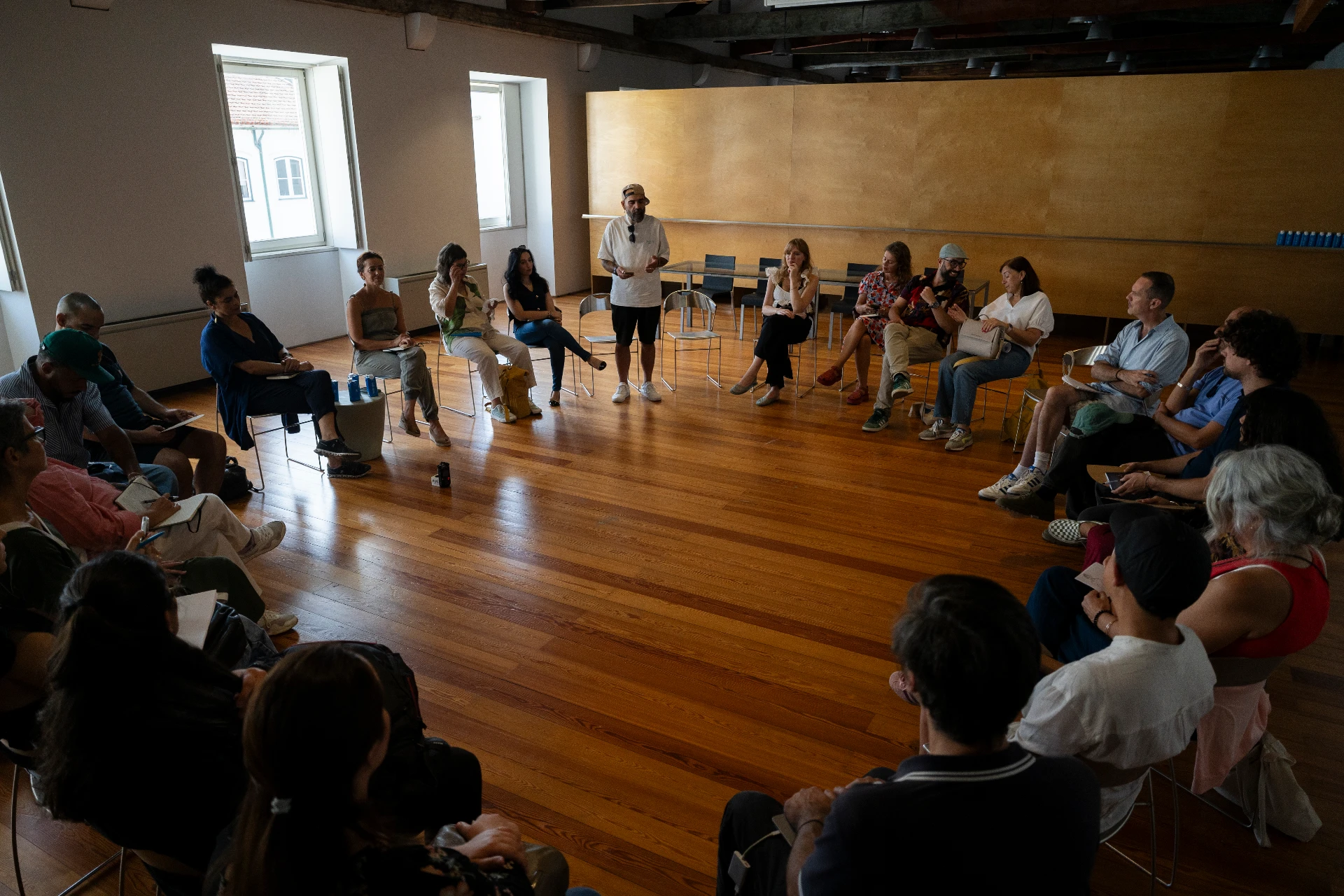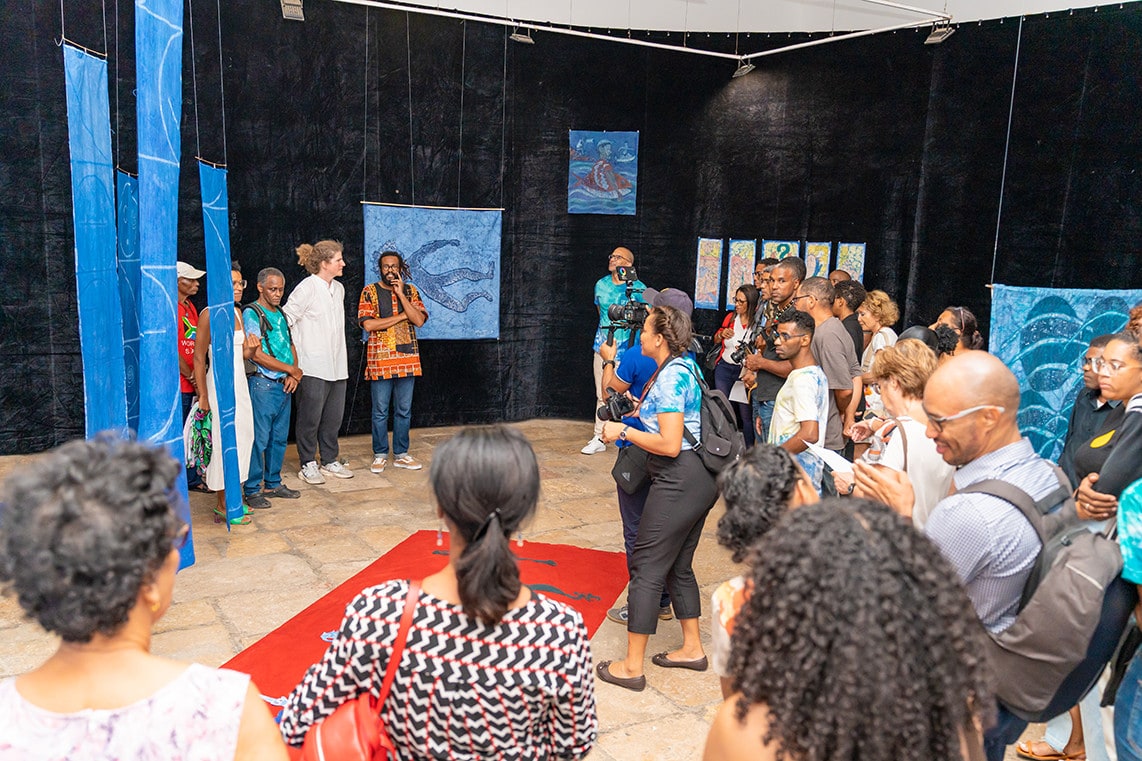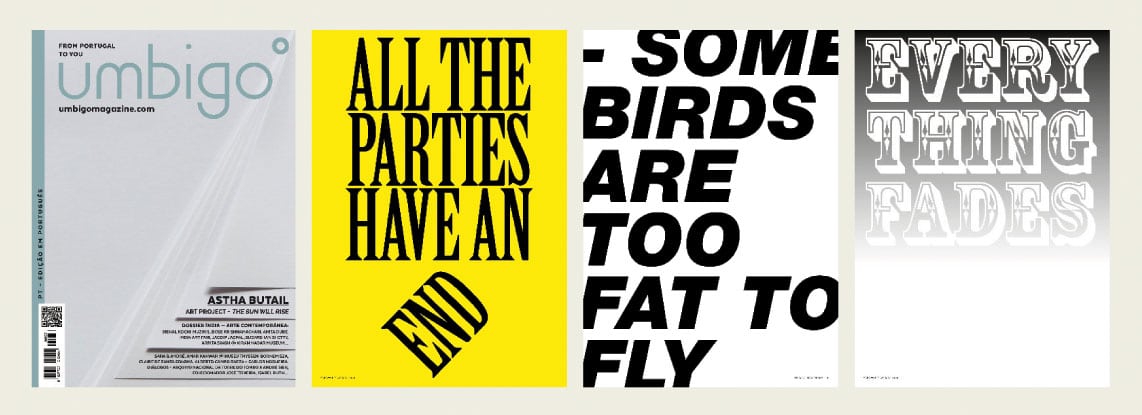article
The urgency of dialogue and proximity: Cu.Co - Encontro de Jornalismo Cultural de Coimbra
As I write this article, the record player is playing the album Pipe Tree by Diogo Alexandre Bock Ensemble, released by Jacc Records. This is just one of the many albums they release in elaborate editions, as part of their important mapping of not only jazz but also of various artists from vast universes. Music was one of the areas that marked five days entirely dedicated to a vibrant, transdisciplinary culture that has characterized the city of Coimbra, and which, in early September, came together in the second edition of Cu.Co – Coimbra Cultural Journalism Meeting.
Cu.Co was an idea that originated with journalist, critic, and music programmer Rui Miguel Abreu and was conceived and implemented in collaboration with Rafael Nascimento, head of the cultural division of the Municipality of Coimbra, resulted in these days dedicated to the relevance of cultural journalism and its debate and reflection.
A week after the event, clarity begins to emerge, ideas take shape, and it becomes possible to extract the true essence of Cu.Co, something difficult to convey in words. On our first day there, the second day of Cu.Co, we asked Rui Miguel Abreu to introduce us to his colleagues, as we were already familiar with his written work, but not with the faces behind it. Immediately, I grasped the essence of this encounter. Physical proximity to others is being lost in a world increasingly characterized by distance and increasingly digital communication, where visual contact becomes increasingly residual. This prevailing near-anonymity makes human beings, characterized as social beings, potentially distant, creating a gap that is difficult to bridge. This is, after all, one of the great essences of Cu.Co: a gathering of people who think about culture and who, together, can build a collective thought. More meetings like this are necessary—I would say urgent—that allow us to step out of anonymity and converse among peers, building something greater through dialogue and closeness. From this Cu.Co, guided by good conversations and reflections, good ideas and friendships will certainly emerge.
What animal is depicted on that mid-20th-century zither? Is it a monkey or an elephant? Curiosity sparked a conversation at LCRIM (Laboratory for the Conservation and Restoration of Musical Instruments), part of the Coimbra Music Museum and located at Colégio da Graça. It is in this space, under the guidance of director and mentor Eduardo Loio and a dedicated team, that a city's musical memory and identity are preserved. The sound of musical instrument creation and restoration echoes through the rooms. Students, teachers, and self-taught musicians bring instruments to life and rehabilitate them, some of them nearly extinct. Returning to our initial curiosity, Loio clarified that the figure on the zither does not represent any particular animal, but rather a Hindu deity.
The zither is not the main object of study and concern of this Museum, but rather the violatoeira, the guitarrinho, the Portuguese banjo, and the bandolão. There are many stories surrounding each of them and their diverse origins. Little by little, they emerge from cellars, warehouses, or even the trash, to be given new life by the hands of those who restore them. One of the students has already built two guitars for her grandchildren and is learning to play this instrument, which, curiously enough, in times gone by was very useful as a first step for those learning the violin.
After an urgent discussion about "Instruments on the Verge of De-Extinction," we observed and heard these instruments gain new life in a very special space: the steps of Colégio da Graça, where groups like Estaca Zero, Barco Doido, and Biodiversidade em Baixo took us on a journey through time that is, however, quite contemporary. The recovery of these and other instruments is, above all, an act of resistance to the passage of time.
The nights were spent at the Coimbra Major Seminary, carefully restored, where we found silence in a minimalist and comfortable room. This space for gathering and reflection also houses the Semente Atelier. Created by Inês Moura and Clara Moura in what was once the Seminary rector's garage, this space dedicated to art, performance, and dialogue celebrated its first anniversary with a poetic day dominated by diverse sensory approaches. It began with the savoring of bread from Patrícia Miguel Dias' Bruta project, who spoke to us about how good ingredients can transform bread into medicine, the lack of crossover between traditional knowledge and quality raw materials, and the 100 different types of wheat, currently reduced to two. After the informative tasting, an important and "unlocking" roundtable discussion took place on the "place that listens and the city that germinates." The conversation also provided a voice for journalists, who often feel unheard and overwhelmed, unable to respond to an increasingly culturally effervescent environment that leaves no room for observation, reflection, or writing. It became clear that there is still much to be said and that time was short for a dialogue that had long been longing to emerge, perhaps due to a certain timidity that imprisoned him. Rui Miguel Abreu's DJ set, in front of the Mondego River, continued the conversation through several voices who felt identified. This perhaps was the moment that unlocked the momentum for the roundtables of the following days and the starting point for a dialogue open to listening.
The lunch, a performance-style lunch carefully prepared by the Semente studio, created a very special connection between flavors, science, and heritage with the Major Seminary, focusing on Canon Póvoa dos Reis, professor, and researcher, and his research on red algae. It was a multi-part lunch in one of the rooms where I taught, where we encountered a kind of natural history museum. Matéria do Gesto (The Matter of Gesture) was the performance that followed, a kind of dialogue between Inês Moura's dance and the music of musicians Bernardo Nascimento and Gonçalo Parreirão. Body, matter, gesture, skin, and sound came together on this day when many seeds germinated.
The last two days were dedicated to contemporary art. The first featured a broad conversation about the perennial problems of communicating art: under-budgeting and the lack of media space and funding, in an important critical debate that continued the one already initiated at Atelier Semente. The second featured a multi-tempo dance between Helena Almeida and Artur Rosa in the exhibition Juntos, and the contemplative and meticulous nature of Andreia Nóbrega, both at the CAV, curated by Miguel von Hafe Pérez. We then headed to the CACC, where the exhibition Sombra dupla: obras da Coleção de Arte Contemporânea do Estado is on display, curated by Ana Guimarães and Beatriz Hilário, and where a roundtable discussion on "Coimbra and the Construction of a New Contemporary Centrality" took place, involving organizations such as CAPC/Anozero, CACC, CAV, and several journalists. The theme prompted reflection on the Manifesta 17 Coimbra Anozero'28 Biennial and how hosting this initiative can strengthen the contemporary art scene, not only locally but also nationally. This joint project will establish numerous connections, involving the University of Coimbra, the city's various art and culture institutions, and communities, benefiting from local cultural, urban, and environmental conditions.
The round table also reinforced the eternal issue of the lack of audiences and the importance of training people who are aware of and interested in the various themes brought up by contemporary art, so that the connection between the University, structures and community must assume an increasingly cohesive role in mitigating this, which is always a major issue.
The Manifesta team will move to Coimbra in 2026 to begin work on the project proposed by Anozero, based on the city's World Heritage status and the importance of forest preservation.
The start of Cu.Co
The seed for Cu.Co was planted in 2014, when Rui Miguel Abreu was invited by the Goethe Institute to Nairobi for a meeting of journalists, which included 20 journalists from five European and five African capitals. "The program was excellent, and the main goal was for us to talk among ourselves for a few hours a day, with no intention other than to think out loud, and for our conversations to be recorded so they could be archived." This meeting resulted in the book Ten Citys, published by the Goethe Institute, leaving the idea of creating something similar latent in his mind. It was about three years ago that the project began to take shape, when he met Rafael Nascimento, division head of the culture department at the Coimbra City Hall and proposed the project. "From several conversations, we arrived at this design, composed of two main guiding principles: bringing together in the same space a series of people who write about culture, giving them excuses to think, discuss, and converse in moments that could happen during lunch, at the end of the day on a terrace, or at formal round tables. And, on the other hand, thinking and reflecting on the city's cultural reality, demonstrating that Coimbra does not have a monoculture when it comes to cultural production. It is a plural city, with many layers, where various arts intersect."
This was the premise of the program when they began to outline it, calling a general meeting at the Convent of São Francisco, with the various organizations that think, create, and produce culture in the city, from contemporary art to film, music, and theater. The very space where the consultation took place, and which we took a guided tour of, was transformative for Coimbra's music scene: the Convent of São Francisco. "An extraordinary facility that is fortunately still alive and well with an excellent program."
For Rafael Nascimento, it makes sense for the project to also be anchored in the city's spontaneous programming, "which includes various concerts, showcases, the Teatrão play in Serpins, with a view to decentralization, or the exhibition Cave – Obras da Coleção Encontros de Fotografia e do artista convidado Carlos Lobo, curated by Miguel von Hafe Pérez." Located in the former furniture warehouse "A Feira," a private, vacant space that is part of society's collective memory, Nascimento states, "the fundamental reason for creating Cu.Co is also related to my vision of what municipal councils should do when they are in a given area. Instead of imposing a program, they should observe, listen to, and understand the existing critical mass and help it to create and execute better projects and work."
Cu.Co was born from this encounter between the territory and the need to preserve good cultural journalism through conversation and debate. "And the goal was achieved: journalists began to talk about their issues, anxieties, and difficulties, in a space for dialogue that didn't exist before and is very relevant in these roundtables," said Rui Miguel Abreu. Conversations are being recorded and will soon be published on a website, as there is a plan to create such an archive. "Who knows, perhaps in 10 years the website itself will become a kind of repository of memories, which can be investigated, studied, and referenced."
There's a special energy circulating in the city, a desire to talk and think about solutions through stimulating and productive encounters.
ADVERTISING
Previous
article
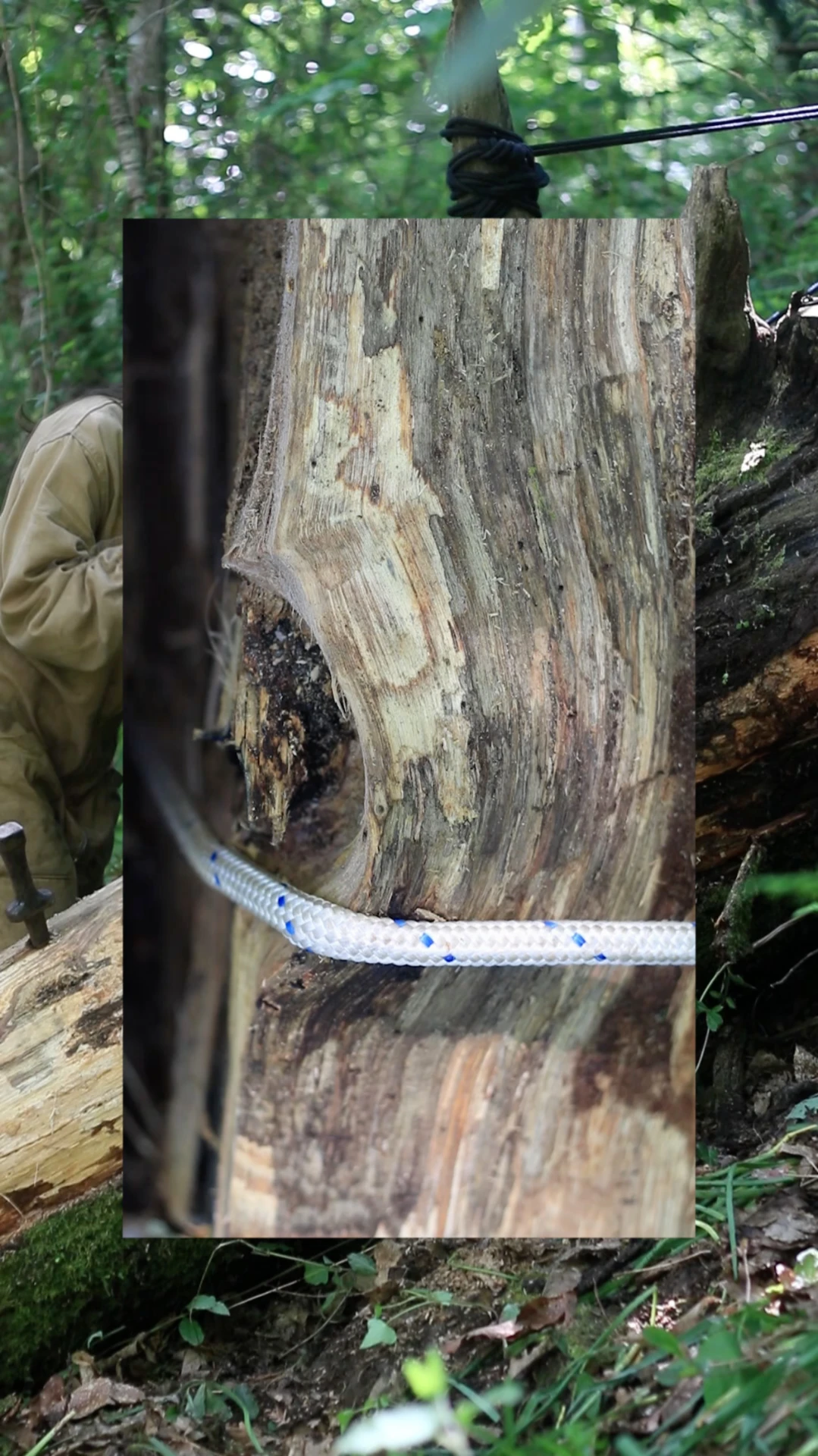
19 Sep 2025
Habitat, by Landra
By Carla Carbone
Next
interview
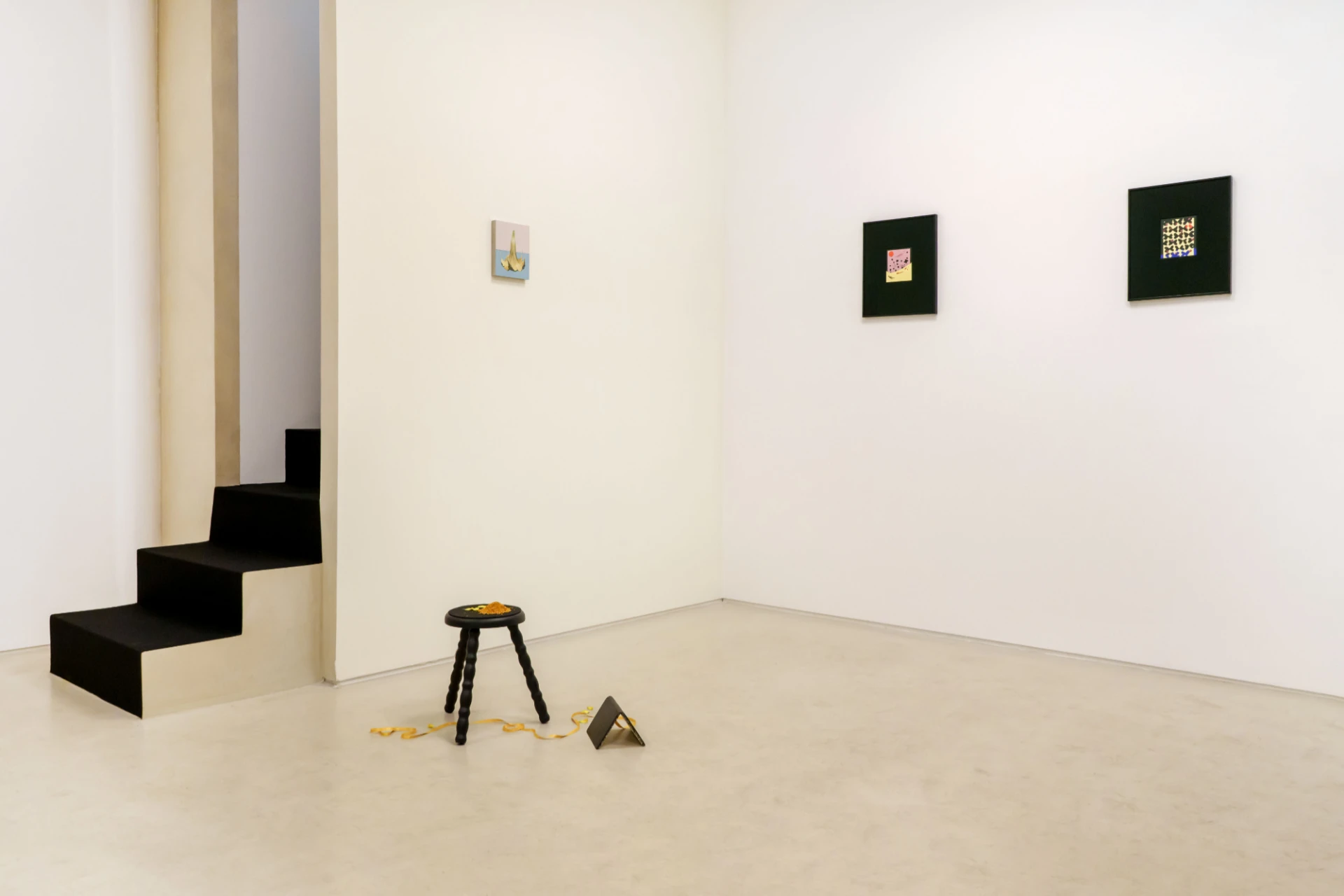
23 Sep 2025
Interview with Francisca Valador, author of Umbigo´s monthly cover
By Diogo E S Dietl
Related Posts
